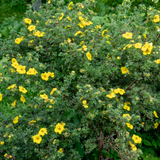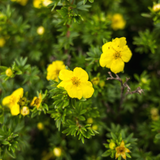30/40cm Pot Grown Yellow Potentilla
(Potentilla fruticosa 'Goldfinger')
Yellow Potentilla is a hardy deciduous hedge with a long flowering period that boasts little, sunny-yellow flowers right from June through to October.
Yellow Potentilla is a hardy deciduous hedge with a long flowering period that boasts little, sunny-yellow flowers right from June through to October.




